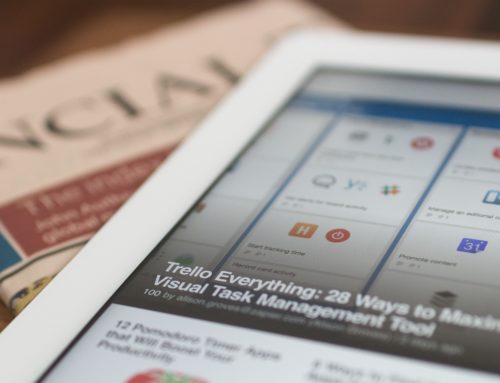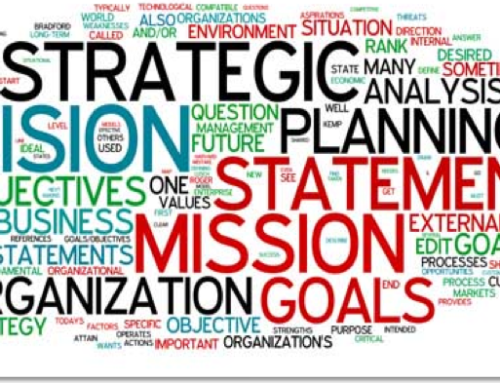 You know what the problem with PR is?
You know what the problem with PR is?
Most PR pros (and firms).
We in the PR industry have done a poor job of defining and promoting what we do.
The term “PR” has become synonymous with “press releases” (easy enough to understand why), “buzz,” “publicity,” and “spin.”
Ugh.
Image: marcelinoportfolio‘s Flickr stream, CC 2.0
What good PR actually entails is a lot more.
It’s understanding who your target audience is, what you’re trying to achieve (be it members, subscriptions, sales, etc.), and then creating and implementing a holistic PR strategy that works towards these ends.
“Press releases” and publicity are just some of the means to these ends. In this world of Web 2.0, those means also include framing messages that resonate with your target customers and reach them directly.
It means figuring out
What your story is,
Why it matters (yesterday Beth Harte took the “why” so far you might not be able to catch it even with a boomerang, with almost all of the variations being questions PR pros should ask, at some point or other),
Who you’re trying to tell it to, and
Where, When and How you’re going to do it.
If you have a media relations background, you’ve already recognized I used the media advisory format just now.
But that doesn’t mean PR = media.
 It just means I think the media advisory format is one that’s easy to use and understand, and drives the point home, which is why I’ve recently been using it to explain how to set up your measurement program as well.
It just means I think the media advisory format is one that’s easy to use and understand, and drives the point home, which is why I’ve recently been using it to explain how to set up your measurement program as well.
Those Ws and H go pretty far.
Image: Loozrboy‘s Flickr stream, CC 2.0
In my post over at BNET today, I examine some of the misconceptions surrounding PR especially for entrepreneurs who are told, ad nauseam, that they don’t need to hire PR firms, they can do it all themselves.
Certainly, you could say that I have a vested interest in holding this position, since PR is my business.
But if you’ve been reading me for a while, or have met me offline, or have worked with me, you’ll know that I don’t serve up BS, especially self-serving BS.
(I save that for my dinner parties, where I can mask it with a healthy flavoring of cumin powder and cilantro.)
Looking outward, looking inward
So when PR professionals themselves promote – knowingly or unknowingly – the false perception that “public relations” and “publicity” are synonymous, who can blame entrepreneurs and business owners for not getting it straight?
This was why I was so disappointed in the Mashable article from about a month ago on “the future of public relations and social media” because, despite the word count, quotes from 14 PR pros (some of whom I know and respect mightily), and pretty screen shots, pretty much its entire thrust was that PR = press releases = publicity = PR.
My initial comment there read:
[PR is] about building effective relationships with one’s publics (hence “public relations”) and using the tools and tactics du jour to do so. Publicity, pitching, media relations, yada yada yada are just one part of doing this, i.e. building relationships with the “press” (whatever that terms means today), but that ignores the usually several other audiences an organization usually has. Comprehensive PR takes those audiences into account, formulating and implementing holistic strategies to build and maintain those relationships. That’s what “good PR” has always been, and should always be, about.
By no means do I think media relations has gone by the wayside.
You’re not going to get any “social media killed PR” posts from me (and, in fact, you should read Jeremy Pepper’s excellent post on why, in fact, the press release isn’t dead).
Think PRNewswire, BusinessWire, et al would still be in business if it were so?
But it is not the only game in PR Town.
What, unfortunately, is also not dead is:
the mindset that sending out a press release and pitching a story, no matter how ham-handedly, is the be all and end all of public relations
the assumption that if you can pull together a media list (which is easy enough to do, though it may take you a little more time than it would if you subscribed to a media database) and bang out 400 words that typically include “excited,” “leverage,” “synergize” and “ground breaking,” you are practicing PR
the obliviousness that communication functions such as “internal,” “external,” “social media,” “investor,” and so on are not the whole story (read “practice” in agency speak) in themselves, but different threads of the story you need to tell for your organization… to different people… often in different ways.
That is what needs to die.
Unfortunately, I think it will take a long, long time.
And that is the problem with PR.
![[EVENT]: PR Hacks for Small Biz (online)](https://shonaliburke.com/wp-content/uploads/2021/06/FB-Ad-1200x800-01-01-01-Copy-500x383.jpeg)








[…] was pleasantly stunned by the reaction to my post the other day on what I perceive as the problem with PR. I don’t rant all that often (publicly… do I?), but this was something I needed to get […]
[…] – or won’t – change their views, especially if they don’t fully understand what the practice of public relations entails, you get […]
[…] Because if there’s one thing I believe takes public relations from good to great, it’s when your audiences start becoming your community through the relationships you develop with them. […]
[…] we will, collectively, examine the problem with PR and begin, brick by brick, to rebuild what you and I know is basically a decent […]
[…] It’s inspiring smart folks like Matt to write more about our field. And that’s the only way our field will progress. […]
[…] Now, I’ve written before about how public relations is really about telling your story. […]
[…] just like there’s more to PR than just publicity, there’s much more to a day in the uniformed life than just maneuver. Here are six things the […]
[…] written about it before, and when I present, I try to tell stories too. Stories of former and/or current clients, stories […]
[…] 4. The Problem With PR […]
[…] that we’ve all made our mistakes. But it worries me that some of these things – which include basic commonsense – are still happening to the degree they do. It’s one of the problems with PR. […]
[…] written about it before, and when I present, I try to tell stories too. Stories of former and/or current clients, stories […]
[…] PR has a perception problem. A big one. We’re seen as spin doctors. People think that all we do is publicity and try to get people to buy things they don’t need. But as Danny Brown says, it isn’t the […]
[…] industry? PR has a perception problem. A big one. We’re seen as spin doctors. People think that all we do is publicity and try to get people to buy things they don’t need. But as Danny Brown says, it isn’t the […]
[…] PR industry?PR has a perception problem. A big one. We’re seen as spin doctors. People think that all we do is publicity and try to get people to buy things they don’t need. But as Danny Brown says, it isn’t the […]
[…] to explain the connection. See, PR has a perception problem. A big one. We’re spin doctors. All we do is publicity. We try to get people to buy things they don’t need. But as Danny Brown says, it isn’t […]
[…] just like there’s more to PR than just publicity, there’s much more to a day in the uniformed life than just maneuver. Here are six things the […]
[…] It’s one of the problems with PR. […]
[…] Now, I’ve written before about how public relations is really about telling your story. […]
[…] It’s inspiring smart folks like Matt to write more about our field. And that’s the only way our field will progress. […]
[…] we will, collectively, examine the problem with PR and begin, brick by brick, to rebuild what you and I know is basically a decent […]
[…] Because if there’s one thing I believe takes public relations from good to great, it’s when your audiences start becoming your community through the relationships you develop with them. […]
[…] WGB editor Shonali Burke muses on the problem with PR […]
[…] – or won’t – change their views, especially if they don’t fully understand what the practice of public relations entails, you get […]
Hi Shonali,
I’m only just not reading this post. I saw the post in Mashable when it originally came out, and of course I was disappointed in the post. We mulled over how we should respond to it.
The pace of the industry is changing extraordinarily fast. I believe that the communications industry as a whole – Marketing, Advertising, Public Relations, is moving closer and closer together as it becomes easier to curate all of the communications online. Today, a regional story can be seen by international audiences. Today, your news release can reach audiences you never expected it see in the past.
While I come from one of the industry leaders in the distribution of content, the idea of what content we are distributing has been in a constant flux over the last 10 years. Notice before I said news release and not press release. When a company or organization issues news today, that news reaches a wider audience than just the press.
Does this mean that’s where the communications professional should stop? Absolutely not. I’ve always maintained that the release of new information in an official channel is just the beginning. The communications pro today needs to follow that up with relationships, new channels, and continuation of that conversation. Today what to do next starts to become a little easier because we can listen better to where those conversations are happening and where they are leading.
Thank you Shonali for always offering such good insights.
Michael Pranikoff
Global Director, Emerging Media
PR Newswire
Thanks, Mike, for stopping by!
[…] Why: part of the problem with PR is that businesses still don’t understand what we do. And that leads to stuff like […]
[…] Were you inside my head when I wrote the problem with PR?! […]
[…] PR blog Waxing Unlyrical published a post that was very interesting. It talked about how PR is not dead and showed some interesting aspects […]
[…] to my RSS feed or Subscribe by Email. Thanks for visiting!I’ve ranted quite a bit about the problem with PR, what the real future of PR is, and why good PR measurement is so […]
[…] The Problem With PR by Shonali […]
Shonali, I am a public relations student and I found your post very interesting and helpful. I enjoyed your “Who, What, When, Where, Why, and How” descriptions of what a public relations person does. I agree with you that public relations has more to do with relationships than press releases. We are currently in the “Relationship Era” of marketing, and even though I know PR isn’t marketing, it does make sense that in order to sell a product or gain a good rapport, professionals must first develop and maintain a relationship with consumers and with the media. Thank you for posting!
Melanie, thanks so much for stopping by and I’m very glad you found my post helpful!
[…] The Problem With PR (Waxing UnLyrical) – Frankly, this is a post that needed to be written. Public relations professionals get a bad rap from people who don’t know what PR is. (I’m often asked if PR means advertising.) Kudos to Shonali Burke for breaking it down for everyone, although, will anybody outside of the PR universe read it? […]
[…] was pleasantly stunned by the reaction to my post the other day on what I perceive as the problem with PR. I don’t rant all that often (publicly… do I?), but this was something I needed to get […]
[…] was underscored in a great blog post by my Twitter pal Shonali Burke in which she outlines “The Problem with PR.&… In it Shonali calls out the PR industry for poorly defining and promoting what it does for a […]
I liked this post as all of us in the industry need a good kick in the rear every now and then. One thing that I want to chime in on is the Mashable piece. I was in the article and the questions for the interview were based on press releases so the title and vibe may have been taken out of context. I can pass along the questions to you if you would like but it was more along the lines of the press release not PR pros targeting it with their responses.
Glad my boot was of service, Jeff!
You know, when I read the Mashable piece, I wondered if all of you who were quoted had been asked specifically about press releases et al, which would explain a lot.
Which makes me even more disappointed in the article, because it shows that the writer has a very limited understanding of what public relations is. To her credit, she responded gamely and graciously to my comments.
Mashable should have done a better job of educating not just her, but of framing the article to portray a more holistic view. Heaven knows they gave it enough space. So I don’t think the title & vibe were taken out of context; it’s exactly the context they placed it in, and it’s that context that unsettled me.
Shonali,
To the Assumption, I’ll just add this caveat: there’s a difference being doing something and doing it well.
To the Obliviousness, it’s that they are treated differently often isolated. Employee relations becomes the sole purview of HR, external audiences are targeted by the MarComm team, and so on.
PR is about sharing the right messages with the right audiences, but also about making them work together for a company’s overall communications and business goals. Integration, or lack there of, IMO is a problem with PR. FWIW.
Davina, I absolutely agree; huge difference between “doing something and doing it well.”
And integration is a major problem as well. That’s why I was never comfortable, when I was in the agency world, of being put into one “practice.” What if I wanted to work cross-functionally? I have to say that Ruder Finn was pretty good at encouraging that, at least when I was there, but I shudder to think of what might have happened had I been at another, more rigid agency.
This post really got me thinking about PR and how I’m practicing it each day. It’s so easy to say that what we’re doing is PR because we write press releases, build the media lists and pitch endlessly, however it truly is about building, maintaining and nurturing relationships with the media. Throughout our daily routines, unfortunately, I think a lot of PR professionals have lost sight of the importance of relationships.
Megan, spot on. The other thing to keep in mind (for all of us), is that there are many different kinds of relationships that are important – not just the ones we build with the media. That’s what public relations is really about.
+1 to everything Jeremy Pepper just said!
Ha! Thanks!
My great unwritten post is that PR 2.0 is the death of PR: it has pushed forward the belief that anyone can do PR, that social media can be done with anyone with a Twitter account and who claims community.
Look at the “leaders” out there right now, and then ask what they have really done? Not much beyond hurting PR with the “anyone can do it!” mentality.
Great post, Shonali.
Hey, Jeremy, thanks so much. I would like your great unwritten post to be written asap, please. :)
Shonali, thank you for this post. You inspired me to add some of my own thoughts in a blog posting as well!
I agree, it is sad that we haven’t done a good job of communicating what we do in our profession, and more importantly why it’s a crucial part of business success.
Maybe the founding fathers of PR did this on purpose, so that we can stay behind the scenes while setting our clients up for success. Or, should we think about changing the name of our profession to better reflect what we do?
Leila, thanks much and for your post as well, which I did read and shall stop by again.
I don’t know if changing the profession’s name is really a practical option. If it were, wouldn’t the various associations who ponder on the topic have made a move to do so by now? So I think we’re stuck with it, and we just have to keep trying to define it better.
[…] of my Twitter acquaintances and a fellow solo PR pro, Shonali, posted an article today that got me thinking: If I can’t communicate to my own friends and family what it is […]
Great post Shonali, and I agree with your points.
To me it’s odd that in an industry with a focus on image, relationships and effective communications, there is still a hard time communicating to others outside the industry what PR actually is. However, you do a very nice job in your explanation.
The focus of PR is not, as you state, something as simple as a press release, but instead these mutually beneficial relationships, whether it be with media or the front-line workers in a factory, that are built on effective, holistic strategies.
Nice job and right on!
Evan, It’s frustrating irony to be sure, the public relations own image problem. A lot of defining PR comes down to NOTs: it’s not sales, it’s not marketing, it’s not advertising. It is communications, it does include social media and traditional media relations.
Reminded me of this circus analogy for marketing vs. publicity vs. PR vs. sales. http://www.managementhelp.org/ad_prmot/defntion.htm
Thanks, Evan. Yes, I too have often found it ironic that PR pros themselves have a tough time explaining what they do, when it’s our job to help others tell their stories. I’ve seen this as a common problem with several PRSA and IABC chapters as well. Perhaps the fact that we are all communicators means there are too many cooks in the kitchen?
Shonali – I enjoyed your post, but I have one big qualm with it (well, really with some posts like it in the profession as a whole): the PR profession, as a whole, keeps labeling our work as a “problem,” much the same as do reporters, bloggers, social media gurus and everyone else out there with a voice now on Twitter, Facebook and a blog. The thing is, while yes, the PR profession has its share of issues, in reality, our profession is no different than any other business that is working through issues to innovate and revitalize itself. But by constantly labeling the profession’s issues as “problems” or as an “outdated profession” we lose sight of the bigger picture in that there are many, many professionals (such as yourself), agencies and other entities within the profession that are doing tremendous work to help revitalize this wonderful business and help reshape it for the future. So I don’t see all of the issues PR faces necessarily as a “problem” but just that: issues that must be addressed and taken care of appropriately, and I applaud you for taking the time and effort on this front with your post to do so.
Like I said, I really enjoyed this post and it sheds some great light on points all PR pros need to keep in mind.
Keith, I agree with you that it can be demoralizing to keep looking at the “problems” with something, and you’ve probably seen that I try not to be a wet blanket as a rule. And it certainly wasn’t my intention to put the entire industry in a bad light; after all, I’m proud to work in it.
However, I am really concerned about PR’s positioning of itself. The world is becoming a smaller place minute by minute, and though PRSA, IABC and other professional bodies do try to educate and maintain standards of professionalism, how much progress are they really making if Joe Schmoe on the street thinks PR is merely press relations?
This perception, compounded, and then perpetuated by MSM and notable blogs, can do real damage to our profession by coloring the kind of work we get, not least because the afore-mentioned Joe Schmoe then thinks he can “do PR,” sets up his shingle and bam, he’s in business.
I’m all for democratic entry into the business. But there have got to be some standards of professionalism we adhere to, not to mention recognition of what the business actually entails.
So my post was not so much about the “problem” of PR as a profession, but its perception problem. But the former made for a better headline. ;)
Thank you for your thoughtful comment – I appreciate it!
I see your point regarding the fact that while there have been tremendous strides made by PRSA, IABC and other bodies, particularly within the past few years as social media has given rise to the thought that anyone can do PR (or be a journalist, for that matter). You make a good point that part of the issue is this compounding situation where the PR profession inherently needs smart, innovative business minds from outside of communications backgrounds (I’m actually one of those … I come for a sports marketing background), but there has to be some type of professionalism assessed to that in order for this profession to continue to thrive.
I guess, in my estimate, this welcoming of many from various backgrounds is both what makes the PR profession such a wonderful and unique business to work in, but also what gives us challenges, such as those you addressed in your post. Certainly something we all need to be mindful of with colleagues, peers and industry professionals we interact with.
Just to reinforce your point about the ability to enter PR from a variety of backgrounds: that’s true for me too. My education was in Economics and Theater (go figure!), and I was a professional actress/director when I started to work in PR. This is going way back to when I still lived in India. When I moved to the US, I decided to continue with the PR work and dropped the theater, though I’d love to do it again some day.
What I tried to do, and still try to do, was make up for my lack of formal education in PR by reading and learning from those I could. That’s also why I wanted so much to earn my accreditation, which I did 5 years ago. And now, apart from my work, I teach as adjunct faculty at Hopkins’ MA/Comms program.
All this is not to give myself a pat on the back, but to explain my path thus far. There are so many PR pros I feel woefully inadequate around, because they have the educational background which I don’t. But to date, all have been most kind and help me keep up to speed.
So particularly for people who may have as varied – or more – a background as I, I think it’s incumbent to educate ourselves as best we can. That’s why I’m such a huge proponent of accreditation, because, frankly, it’s all we’ve got. With all its flaws, the process is a great learning experience and I wish IABC and PRSA would both figure out how to get more pros committed to the process.
Which brings me back to the role we all play as educators for our profession. We’ve got to understand the strategic nature of what we do and promote that, rather than focus on bits and pieces here and there.